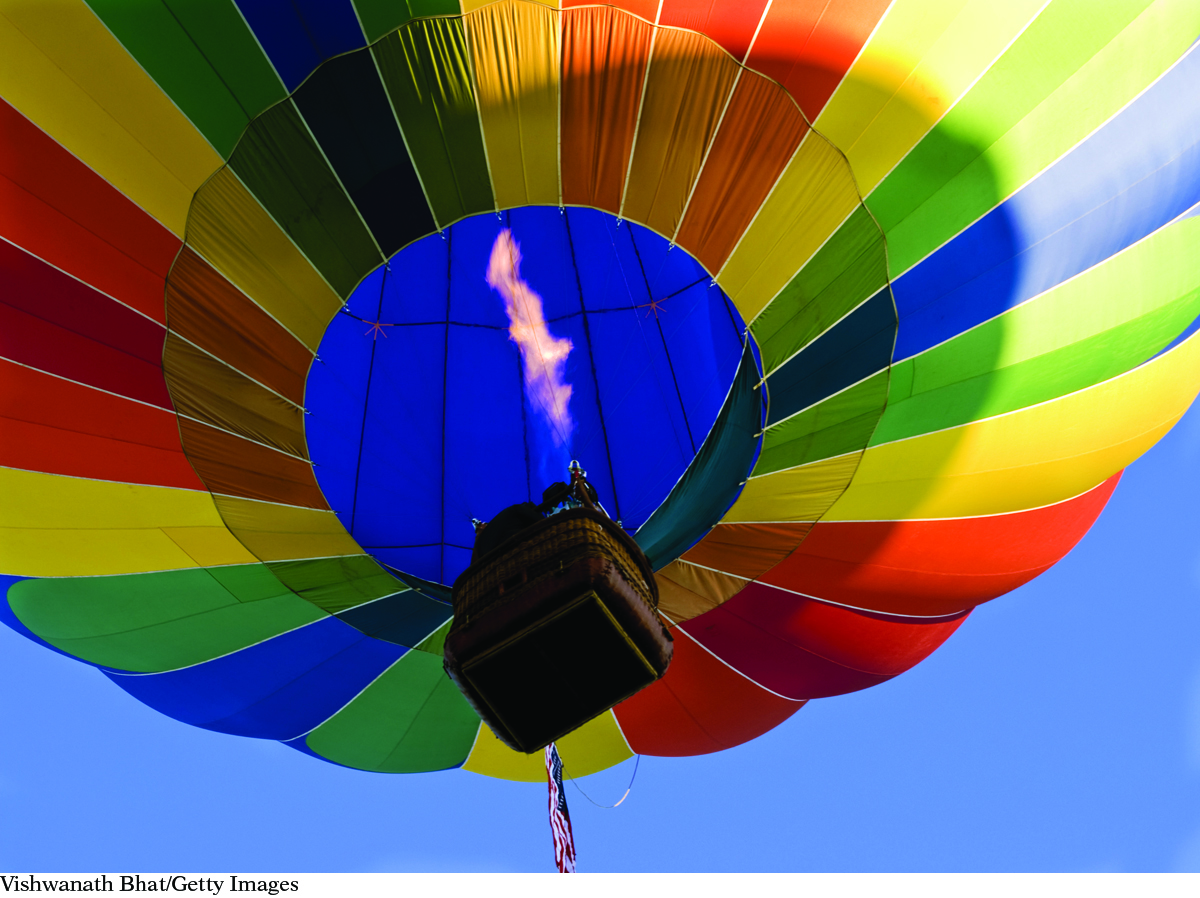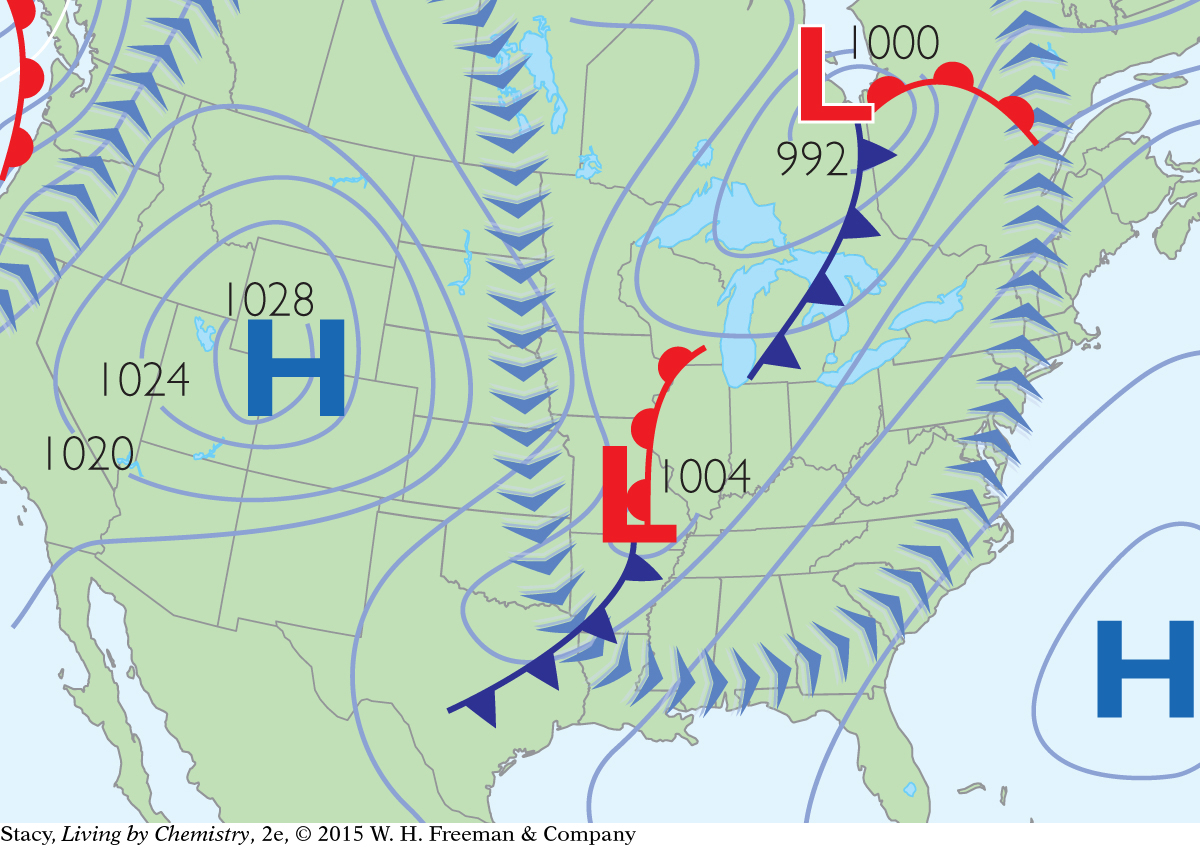Chapter 11 Summary

325
CHAPTER 11
Pressing Matter
SUMMARY
KEY TERMS
sublimation
evaporation
pressure
atmospheric pressure
atmosphere (atm)
inversely proportional
Boyle’s law
Gay-Lussac’s law
kinetic theory of gases
combined gas law
Weather Update
Air pressure at Earth’s surface is constantly changing because air molecules are moving from place to place. Areas of high pressure are associated with clear skies and warm temperatures. The gas molecules in regions of high pressure are moving rapidly and expand into areas of lower pressure. Areas of low pressure are associated with clouds and storms. The gas molecules in regions of low pressure are moving more slowly and water molecules are condensing. Air pressure keeps changing as water evaporates and condenses, which changes the number of air molecules.

Studying gas behavior in small containers helps us to explain the behavior of gases in the atmosphere. Three gas laws relate gas pressure to temperature and volume—Charles’s law, Gay-Lussac’s law, and Boyle’s law. The combined gas law relates pressure, volume, and temperature.
REVIEW EXERCISES
Question 11.1
1. Use the kinetic theory of gases to explain how temperature affects the pressure of a gas.
Question 11.2
2. Explain why a weather balloon pops when it reaches a sufficiently high altitude.
Question 11.3
3. A cylinder with a movable piston contains 26.5 L of air at a pressure of 1.5 atm. If the temperature is kept the same but the volume of the container is expanded to 50.0 L, what is the new pressure of the gas?
Question 11.4
4. A gas sample in a rigid container has a pressure of 3.0 atm at 350 K. If the temperature is raised to 450 K, what will the new gas pressure be?
Question 11.5
5. A sample of gas in a flexible container has a volume of 7.5 L, a pressure of 2.5 atm, and a temperature of 293 K. What will the new pressure be if the volume expands to 10.0 L and the temperature is raised to 315 K?